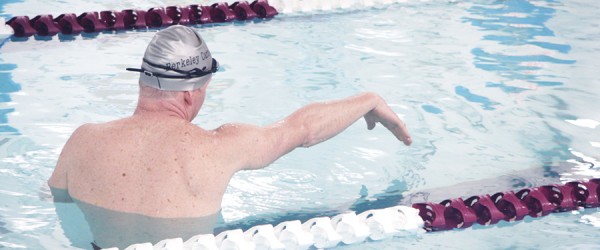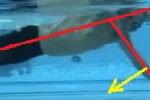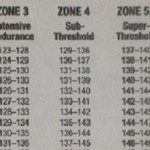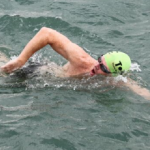John, you may have already seen this. Just discovered this interesting article from last summer comparing the “s” stroke vs. the deep catch stroke. As a new swimmer I know I’ve been taught both by 5 different coaches over the years, and mostly recently the “sculling” or “s” stroke was reinforced at a basic free style course I participated in just last week.
http://well.blogs.nytimes.com/2012/07/04/delineating-the-perfect-swim-stroke/
Hi Ingrid,
Fantastic question.
Yes, I’ve seen this article. The bottom line is that you should drill and practice both methods, for the reasons listed below, measuring progress to ensure you keep what works best for you. I’ve taught many different ways of making the arm stroke and these are my thoughts:
1) As a coach, I’m always playing a video of a great swimmer overlaid on the person I’m coaching in the pool, looking at the gaps. It’s fun to be surprised at how people learn differently!
2) The DEEP catch works best, but most people don’t realize that the deep part must be at the FRONT and the hand gets shallower as the body moves over it (concurrently, as the hand moves backward with respect to the body). You can’t just push your hand as low as possible and expect that to work – it won’t.
2a) The motion of the hand/arm will always have a lot of curvature – with respect to the BODY. Your elbow moves in an arc because it’s attached to your shoulder and that’s not going away.
2b) The motion of the hand/arm will always have some, but much less, curvature – with respect to the LINE OF TRAVEL. This keeps the forces generated moving you where you want to go.
3) Sculling, as a DRILL, at different parts of the stroke can show people how changes in hand direction do increase available force, and how force can FEEL at different times throughout the stroke.
4) Sculling involves movement at the ELBOW joint. If this happens INSIDE YOUR STROKE (as opposed to a steady elbow angle, a paddle), you better have great rhythm (and strong shoulders) to hold the water as your forearm moves about. WEAKNESS/LOSS/SLIPPAGE is easily created anytime you ADD a joint to an object under pressure. Same idea applies to a big, bent-kneed kick, or a head that moves around a lot.
5) Speaking of RHYTHM (the TIMING through a complex movement of exertion, angle, pressure…), this is lost in almost all catch/pull conversations. Every swim stroke (free, breast, back, fly) moves from slow to fast, from front to back, and regardless of the method you use, this thought process must be in there.
6) As a TEACHER, you really LIMIT yourself by thinking it only works ONE WAY, or by teaching it one way. Yes, most force is provided by drag, but the 10-30% created by lift (estimated by studies), if a person has none, is a serious breakthrough for them. Some of the best texts (not pop lit), written by Olympic coaches, tell you to vary TO THE EXTREMES the way you pull, rotate, kick – every aspect of the stroke – as a way to fine tune what’s best for you.
7) And, who’s to say that by teaching a sculling type stroke one evening you won’t help a large portion of the group increase drag force considerably? Or that by teaching a straight pull that you won’t help someone feel changes in direction by their hands/arms to a greater degree. Happens ALL THE TIME. You’ll see strokes per length (and slippage of the hand/arm as measured against the lane lines) drop as they learn, and times drop as they can turn over faster without losing ground.










